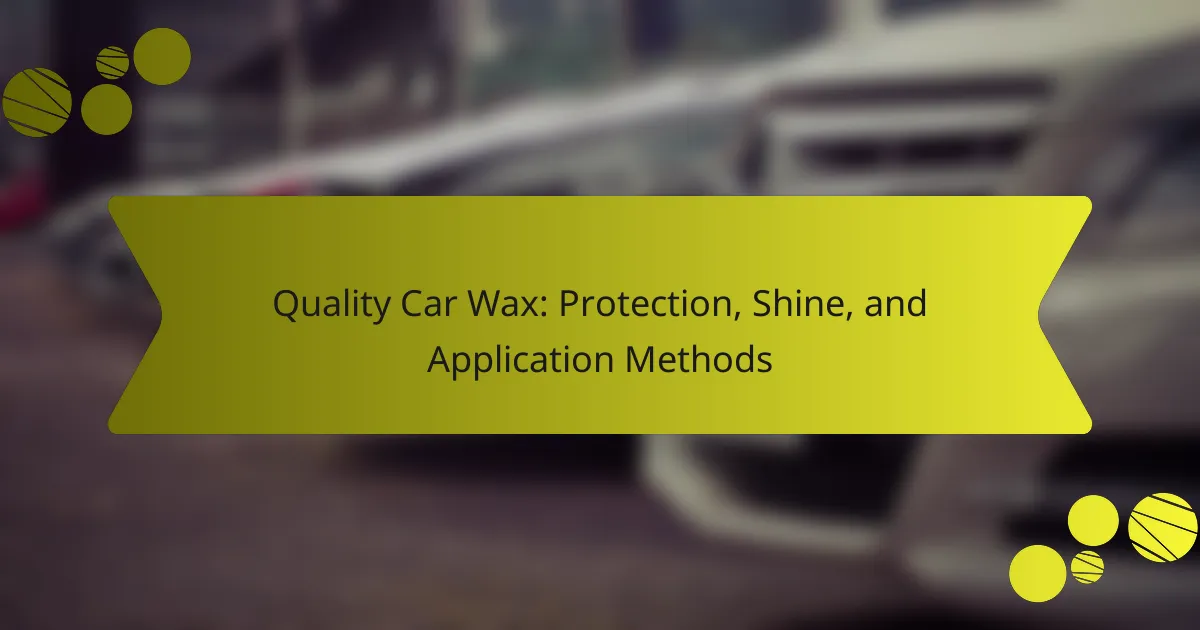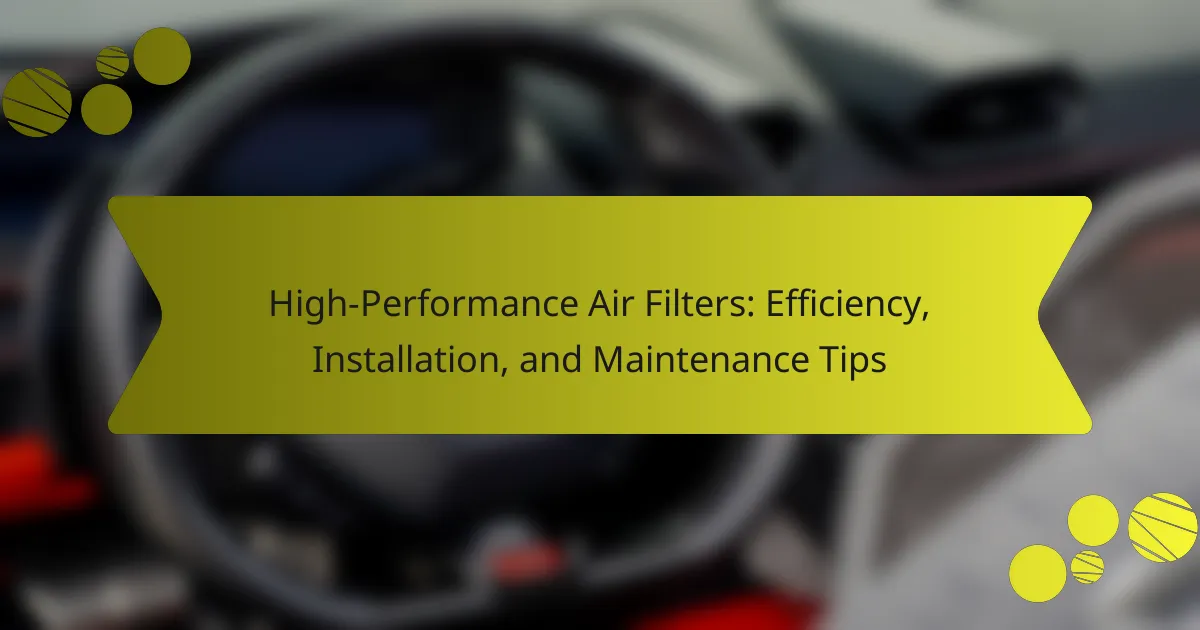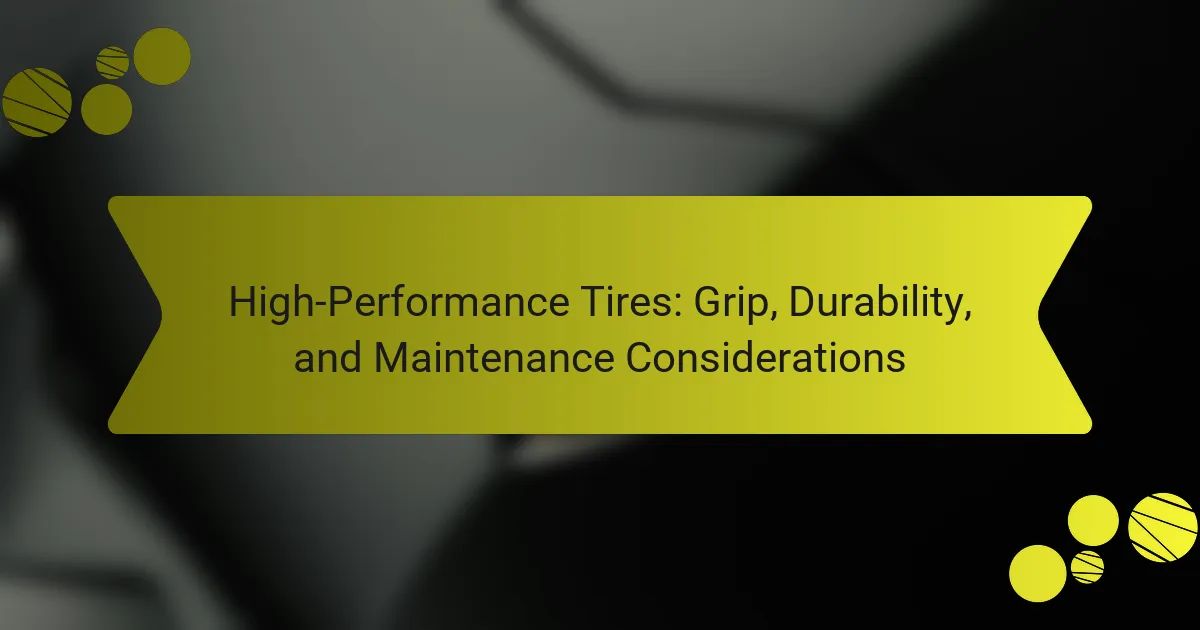Quality car wax offers essential protection against UV rays, water, and scratches, maintaining your vehicle’s paintwork. It enhances shine through various application methods, including hand, machine, spray, and paste. Natural and synthetic waxes provide differing benefits, with natural options emphasizing aesthetics and synthetic types focusing on durability. Regular application and proper techniques are crucial for maximizing the effectiveness and longevity of your car’s protective layer.
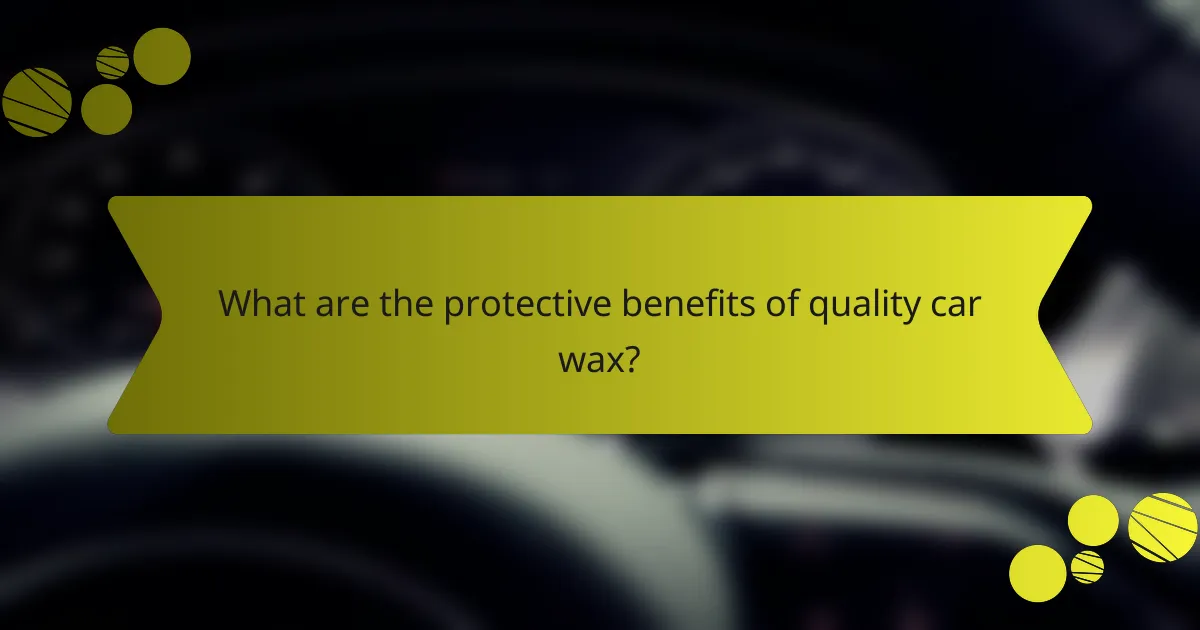
What are the protective benefits of quality car wax?
Quality car wax provides essential protective benefits, including UV protection, water repellency, and scratch resistance. These attributes help maintain the vehicle’s paintwork and extend its lifespan. Quality wax forms a durable barrier against environmental contaminants, such as dirt and road salt, preventing damage. Regular application enhances the car’s shine, improving its aesthetic appeal while safeguarding against fading and oxidation.
How does car wax shield against environmental damage?
Quality car wax protects vehicles from environmental damage by creating a barrier against contaminants. This barrier shields against UV rays, acid rain, bird droppings, and tree sap. The wax’s hydrophobic properties repel water, preventing corrosion and oxidation. Regular application enhances shine and maintains paint integrity, contributing to the vehicle’s longevity.
Why is UV protection important for vehicle longevity?
UV protection is crucial for vehicle longevity as it prevents paint fading and interior damage. Prolonged exposure to UV rays can deteriorate a car’s exterior finish and upholstery, leading to costly repairs. Quality car wax, with UV inhibitors, acts as a barrier against these harmful rays, enhancing shine and prolonging the lifespan of the vehicle’s surfaces. Regular application of wax not only protects but also maintains aesthetic appeal, ensuring the car looks new for longer.
Which contaminants does car wax help repel?
Quality car wax helps repel contaminants such as dirt, dust, water, bird droppings, tree sap, and UV rays. These protective qualities enhance the vehicle’s shine and longevity. Regular application can significantly reduce the adhesion of these harmful substances, maintaining the car’s appearance and finish.
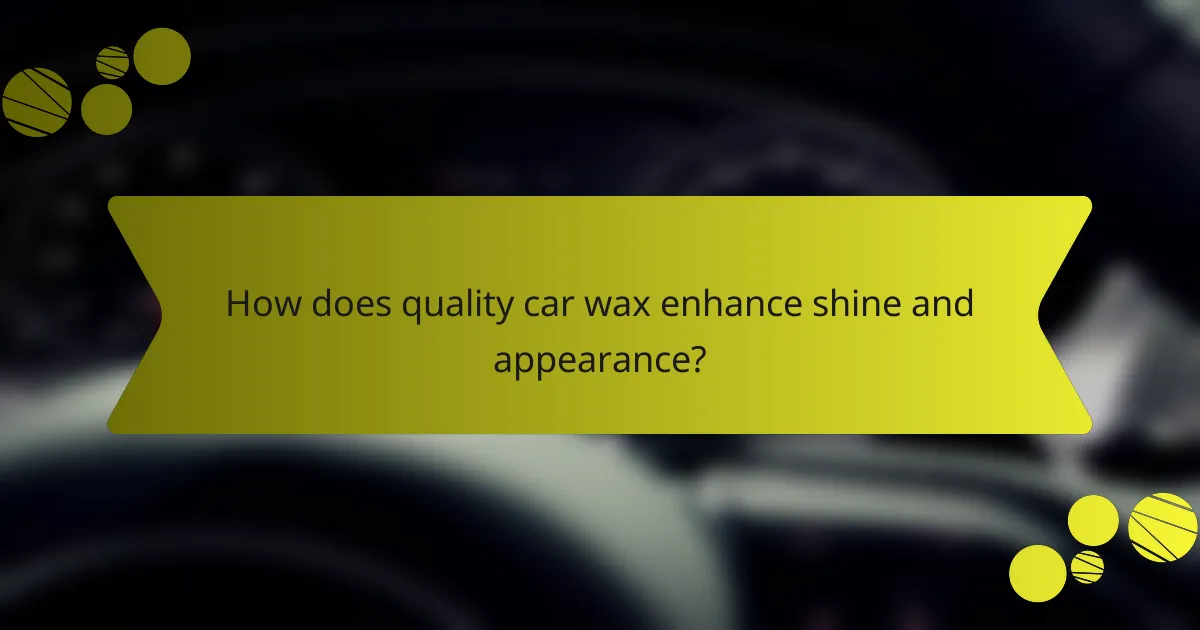
How does quality car wax enhance shine and appearance?
Quality car wax enhances shine and appearance by creating a protective layer that reflects light effectively. This protective layer minimizes surface imperfections, resulting in a glossy finish. High-quality waxes often contain natural carnauba or synthetic polymers, which provide superior gloss and durability. Additionally, regular application can maintain and extend the life of the vehicle’s paint, ensuring it remains vibrant and visually appealing.
What factors contribute to the glossiness of car wax?
The glossiness of car wax is influenced by its formulation, application method, and curing time. High-quality waxes contain natural carnauba or synthetic polymers that enhance shine. Proper application techniques, such as using a soft applicator and buffing, also contribute to achieving a glossy finish. Additionally, allowing adequate curing time allows the wax to bond effectively, maximizing its glossiness.
How do different formulations affect the shine of car wax?
Different formulations can significantly impact the shine of car wax. High-quality waxes typically contain carnauba or synthetic polymers that enhance gloss. Carnauba wax offers a deep, warm shine due to its natural composition, while synthetic options provide a more reflective finish. Additionally, the application method affects shine; for instance, using a foam applicator can yield a smoother, glossier surface compared to a microfiber cloth. Formulations with added oils or gloss enhancers can further amplify shine, making the vehicle appear more polished.
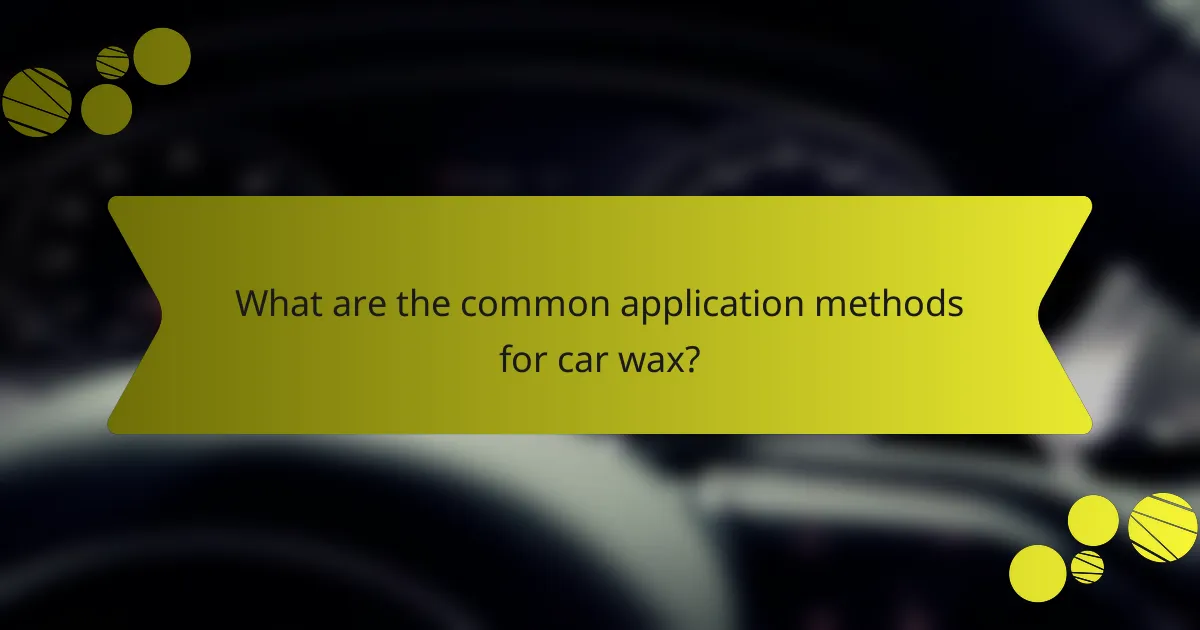
What are the common application methods for car wax?
Common application methods for car wax include hand application, machine application, spray application, and paste application. Hand application offers control and detail, while machine application provides efficiency and uniform coverage. Spray application is convenient for quick touch-ups, and paste application allows for deeper penetration into the paint. Each method varies in ease of use and effectiveness, catering to different user preferences and vehicle conditions.
How do you properly apply car wax by hand?
To properly apply car wax by hand, start by cleaning the car’s surface thoroughly. Use a microfiber cloth to apply a small amount of wax in circular motions, ensuring even coverage. Allow the wax to haze before buffing it off with a clean cloth for a high shine. This method enhances protection and shine, maximizing the benefits of quality car wax.
What tools can enhance the application of car wax?
Using tools like applicator pads, microfiber towels, and foam wax applicators can enhance car wax application. These tools improve even coverage, reduce streaks, and maximize shine. Applicator pads provide a smooth surface for application, while microfiber towels effectively buff away excess wax. Foam wax applicators are designed to hold wax better, ensuring efficient use.
Which techniques ensure even coverage of car wax?
To ensure even coverage of car wax, use a foam applicator pad and apply in overlapping circular motions. This technique minimizes streaks and maximizes coverage. Work in small sections to maintain control and avoid drying before buffing. Regularly check for evenness and adjust application pressure as needed.
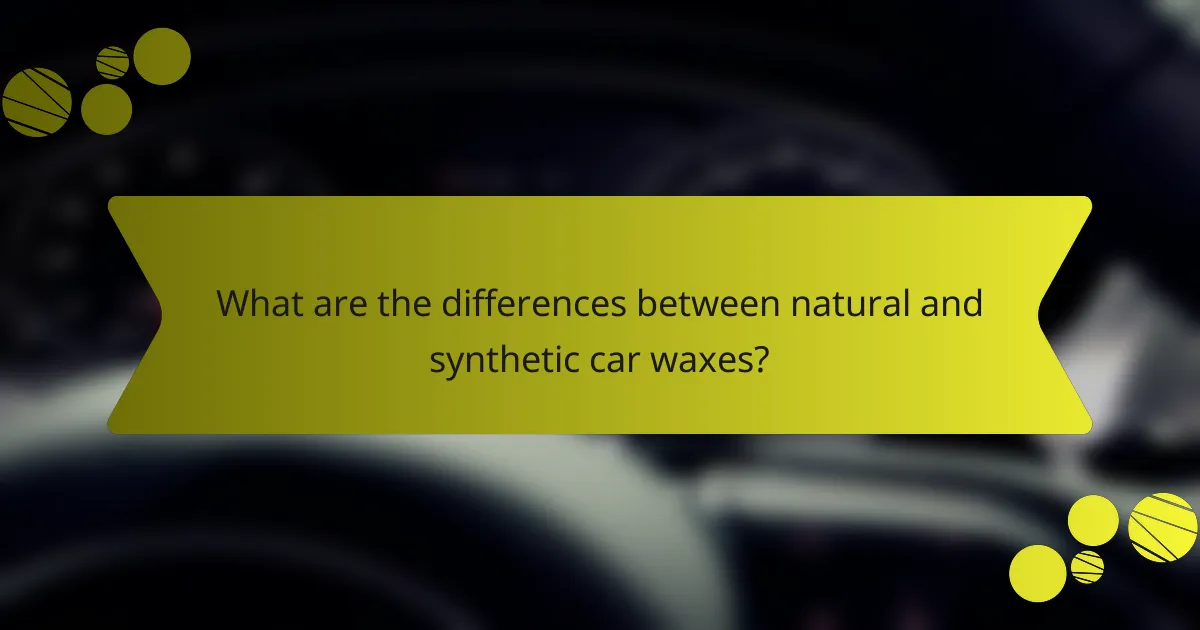
What are the differences between natural and synthetic car waxes?
Natural car waxes offer superior shine and protection derived from organic materials, while synthetic waxes provide longer-lasting durability and ease of application. Natural waxes, like carnauba, enhance depth of color but may require more frequent reapplication. Synthetic waxes often contain polymers that create a protective barrier, lasting up to six months. The choice depends on individual preferences for aesthetics versus longevity.
How do natural car waxes compare in performance and durability?
Natural car waxes typically offer excellent performance and durability, but their effectiveness varies by formulation. Natural waxes, such as carnauba, provide a deep shine and good protection against UV rays and environmental contaminants. However, they may require more frequent reapplication compared to synthetic options. Carnauba wax can last up to three months under optimal conditions, while some synthetic waxes can extend up to six months or more. The choice between natural and synthetic wax often depends on personal preference for shine versus longevity.
What advantages do synthetic waxes offer for modern vehicles?
Synthetic waxes offer superior protection, durability, and a high-gloss finish for modern vehicles. They resist environmental damage, such as UV rays and pollutants, enhancing the longevity of the vehicle’s paint. Additionally, synthetic waxes provide easier application and removal compared to traditional waxes, making them user-friendly. Their formulation allows for a smoother surface, which can improve water beading and dirt repellency, contributing to a cleaner appearance over time.
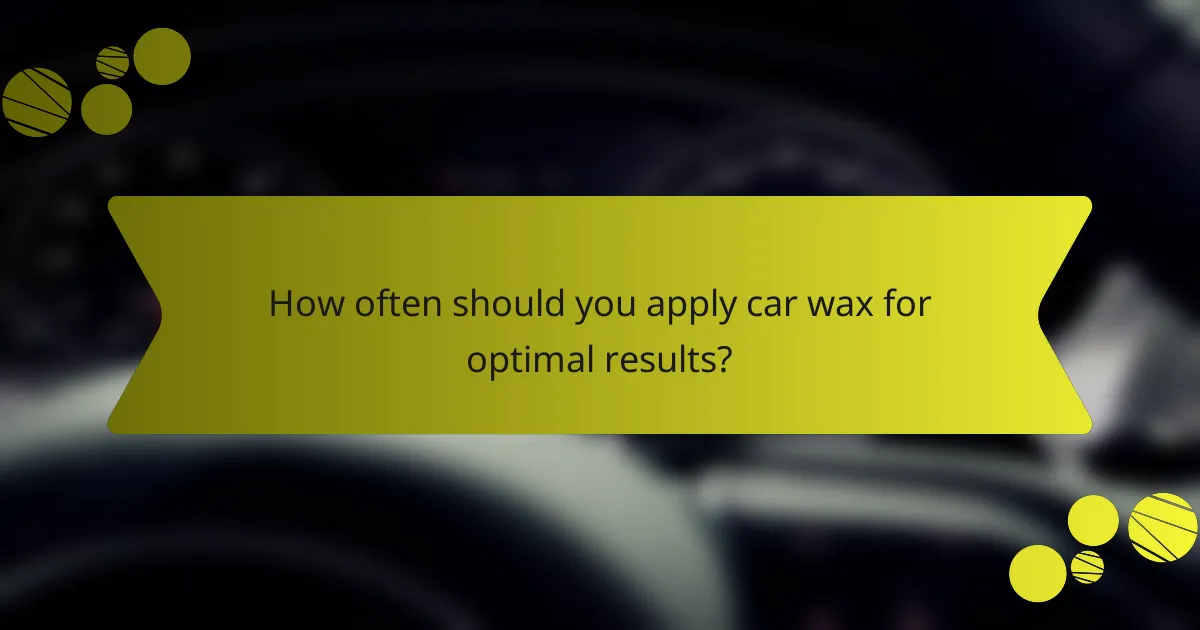
How often should you apply car wax for optimal results?
Apply car wax every three to six months for optimal results. Frequent application enhances protection and shine. Factors such as climate, driving conditions, and wax type can influence frequency. Regular inspections can help determine if reapplication is needed sooner.
What factors influence the frequency of car wax application?
The frequency of car wax application is influenced by environmental conditions, vehicle usage, and wax quality. Frequent exposure to harsh weather, such as rain or UV rays, necessitates more regular waxing. Additionally, cars driven in urban areas or on unpaved roads accumulate dirt faster, requiring more frequent maintenance. High-quality waxes offer longer-lasting protection, reducing the need for frequent applications.
How can seasonal changes affect car wax longevity?
Seasonal changes can significantly impact car wax longevity. Extreme temperatures, humidity, and UV exposure can degrade wax faster than moderate conditions.
In winter, road salt and snow can wear down wax, reducing protection. In summer, high heat can cause wax to break down more quickly, leading to diminished shine and protection.
Regular maintenance and reapplication based on seasonal changes can enhance durability. Choosing high-quality wax can also improve longevity, as premium products often contain advanced polymers for better resistance to environmental factors.
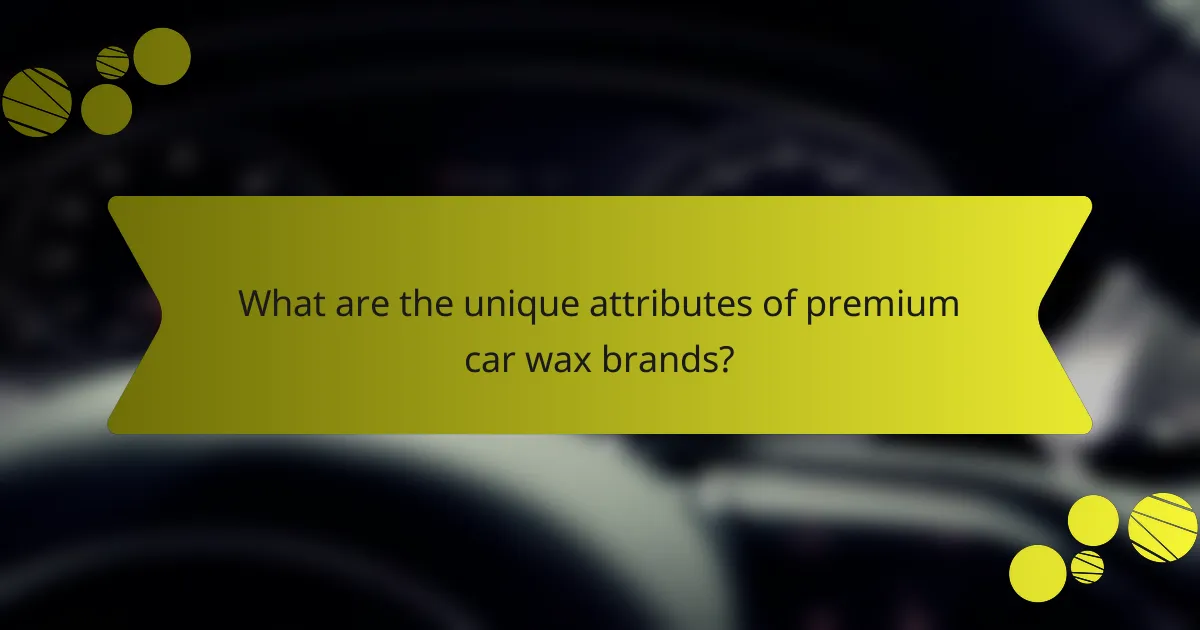
What are the unique attributes of premium car wax brands?
Premium car wax brands exhibit unique attributes that enhance vehicle protection and appearance. These attributes include advanced formulations, longer-lasting protection, superior shine, and ease of application.
Advanced formulations often incorporate carnauba wax or synthetic polymers, providing exceptional durability. Longer-lasting protection can extend up to six months, significantly reducing the frequency of application. Superior shine is achieved through high-gloss finishes that enhance the car’s color depth. Ease of application is a hallmark of premium brands, often featuring spray-on or wipe-on methods that simplify the detailing process.
Which premium brands are recognized for their exceptional quality?
Premium brands recognized for exceptional quality in car wax include Meguiar’s, Chemical Guys, and Turtle Wax. These brands are known for their superior protection, long-lasting shine, and user-friendly application methods. Meguiar’s offers advanced synthetic formulas, while Chemical Guys provide a wide range of wax types, including paste and liquid. Turtle Wax is celebrated for its affordability and effectiveness, making it a popular choice among car enthusiasts. Each brand consistently delivers high-performance products that enhance vehicle appearance and protection.
How do premium waxes differ in formulation and performance?
Premium waxes differ in formulation and performance primarily through their ingredients and protective qualities. High-quality car waxes often incorporate natural carnauba or synthetic polymers, enhancing durability and shine. These formulations provide superior water repellency and UV protection, which contribute to longer-lasting finishes. Additionally, premium waxes may offer easier application and removal, resulting in less effort during the detailing process.
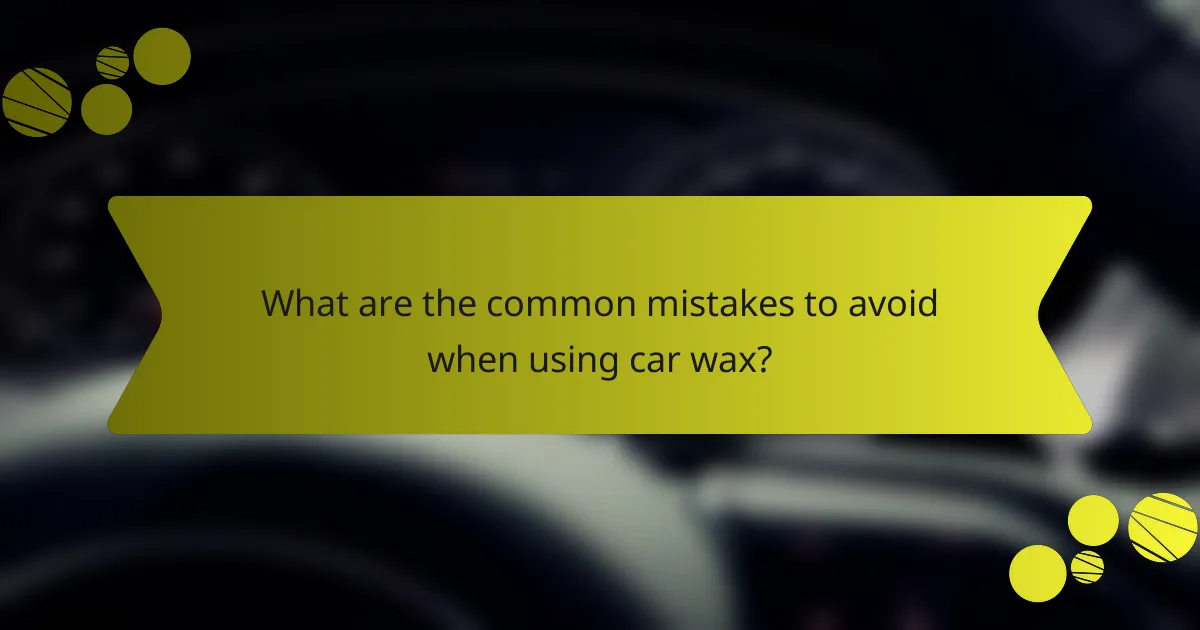
What are the common mistakes to avoid when using car wax?
Common mistakes to avoid when using car wax include improper surface preparation, applying in direct sunlight, using too much product, and neglecting to follow the recommended curing time. These errors can diminish the wax’s protective qualities and shine.
First, ensure the vehicle surface is clean and dry before application. Waxing over dirt or moisture can trap contaminants. Second, avoid applying wax in direct sunlight, as heat can cause the product to dry too quickly, leading to uneven coverage. Third, using excessive wax does not enhance protection; a thin, even layer is sufficient. Finally, allow the wax to cure as directed on the product label to achieve optimal results.
How can improper application techniques diminish effectiveness?
Improper application techniques can significantly diminish the effectiveness of quality car wax. Incorrect methods may lead to uneven coverage, reduced shine, and inadequate protection from environmental damage. For instance, applying wax in direct sunlight can cause it to dry too quickly, resulting in streaks. Additionally, using too much product can create a residue that attracts dirt rather than repelling it. Following recommended application techniques ensures optimal results, enhancing the wax’s protective and aesthetic qualities.
What should you avoid mixing with car wax during application?
Avoid mixing car wax with products containing solvents, abrasive cleaners, or dish soap. These can diminish the wax’s protective qualities and lead to surface damage. Additionally, avoid mixing different brands of wax, as chemical reactions may occur, compromising effectiveness. Always ensure the surface is clean and dry before application for optimal results.
Which maintenance practices prolong the benefits of car wax?
Regular maintenance practices, such as washing and reapplying wax, significantly prolong the benefits of car wax. To maximize protection and shine, wash the vehicle with pH-neutral soap every two weeks. After washing, inspect the wax layer; if it appears dull or water beads poorly, reapply a quality wax. Additionally, parking in shaded areas reduces UV damage to the wax, enhancing its longevity. Using detailing spray between wax applications can also maintain shine and protection.
